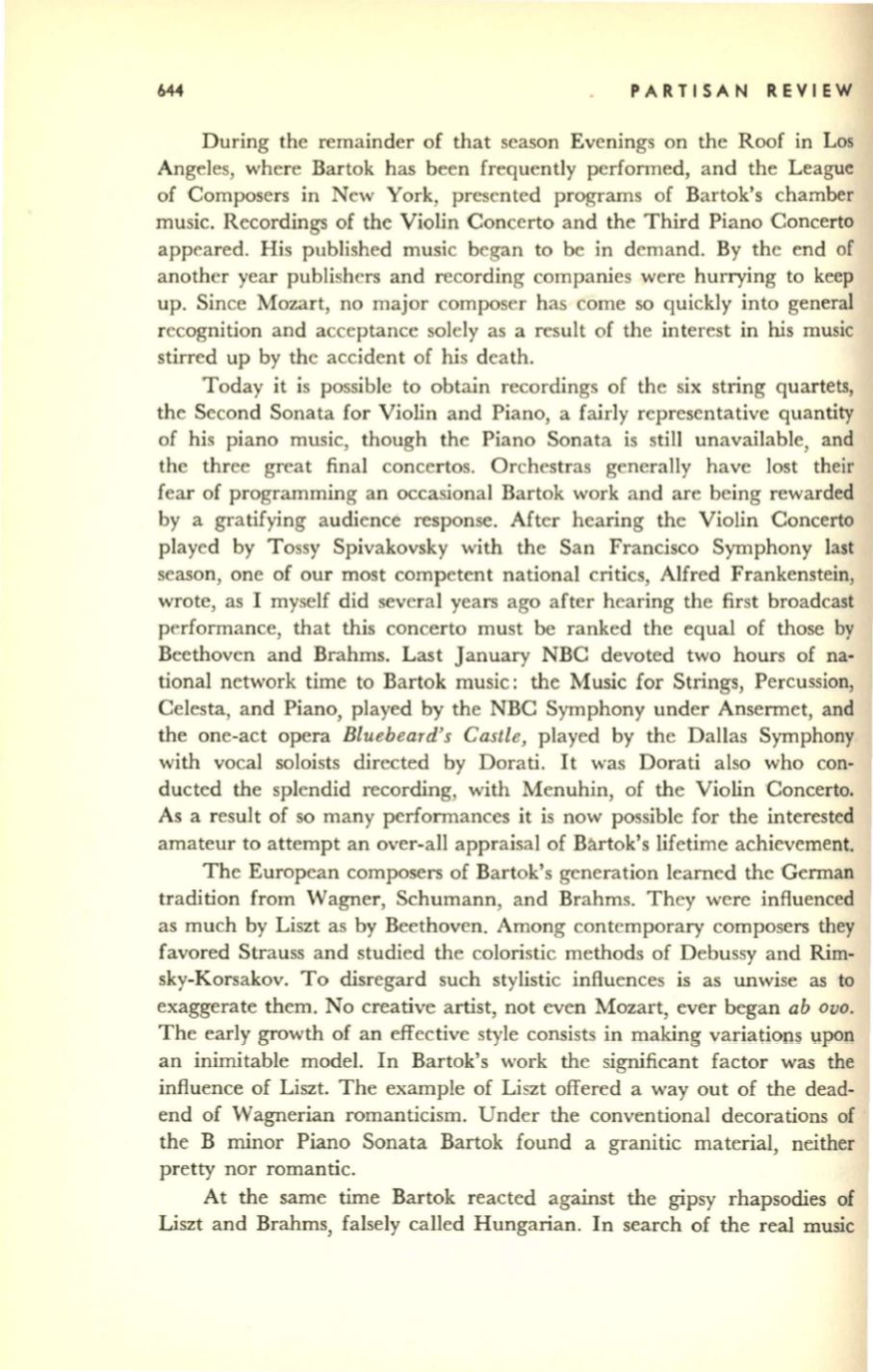
644
PARTISAN REVIEW
During the remainder of that season Evenings on the Roof in Los
Angeles, where Bartok has been frequently performed, and the League
of Composers in New York, presented programs of Bartok's chamber
music. Recordings of the Violin Concerto and the Third Piano Concerto
appeared. His published music began to be in demand. By the end of
another year publishers and recording companies were hurrying to keep
up. Since Mozart, no major composer has come so quickly into general
recognition and acceptance solely as a result of the interest in his music
stirred up by the accident of his death.
Today it is possible to obtain recordings of the six string quartets,
the Second Sonata for Violin and Piano, a fairly representative quantity
of his piano music, though the Piano Sonata is still unavailable, and
the three great final concertos. Orchestras generally have lost their
fear of programming an occasional Bartok work and are being rewarded
by a gratifying audience response. After hearing the Violin Concerto
played by Tossy Spivakovsky with the San Francisco Symphony last
season, one of our most competent national critics, Alfred Frankenstein,
wrote, as I myself did several years ago after hearing the first broadcast
performance, that this concerto must be ranked the equal of those by
Beethoven and Brahms. Last January NBC devoted two hours of na–
tional network time to Bartok music: the Music for Strings, Percussion,
Celesta, and Piano, played by the NBC Symphony under Ansermet, and
the one-act opera
Bluebeard's Castle,
played by the Dallas Symphony
with vocal soloists directed by Dorati.
It
was Dorati also who con–
ducted the splendid recording, with Menuhin, of the Violin Concerto.
As a result of so many performances it is now possible for the interested
amateur to attempt an over-all appraisal of Bru-tok's lifetime achievement.
The European composers of Bartok's generation learned the German
tradition from Wagner, Schumann, and Brahms. They were influenced
as much by Liszt as by Beethoven. Among contemporary composers they
favored Strauss and studied the coloristic methods of Debussy and Rim–
sky-Korsakov. To disregard such stylistic influences is as unwise as to
exaggerate them. No creative artist, not even Mozart, ever began
ab
DUO.
The early growth of an effective style consists in making variations upon
an inimitable model. In Bartok's work the significant factor was the
influence of Liszt. The example of Liszt offered a way out of the dead–
end of Wagnerian romanticism. Under the conventional decorations of
the B minor Piano Sonata Bartok found a granitic material, neither
pretty nor romantic.
At the same time Bartok reacted against the gipsy rhapsodies of
Liszt and Brahms, falsely called Hungarian. In search of the real music


